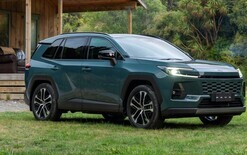Making sense of clean car plans

The government’s desire to move quickly on tackling emissions from imported vehicles means the clean car discount (CCD) should really be viewed as two different initiatives.
I have dubbed one the “interim CCD”, which started on July 1 and ends on December 31. The other is the “real CCD”, which takes effect on January 1, 2022.
The reason for having two different programmes is because politicians wanted to act now but legislation is not in place to allow for the collecting of fees.
The interim CCD is only a subsidy and not a feebate. It is payable to the purchaser of a newly imported vehicle.
The subsidy has pre-defined amounts based on whether the vehicle is new or used and whether it’s a plug-in electric vehicle (EV) or plug-in hybrid. The interim CCD is expected to close at either the end of this year or when it runs out of money, whichever occurs first.
At the start of next year, the real CCD comes into effect assuming the legislative requirements are met.
The real CCD will be a feebate scheme. That means the programme is designed to be cost-neutral with subsidies or rebates on low-to-no-emitting vehicles offset by fees on higher-emitters.
The real CCD will continue to target purchasers of vehicles with rebates and fees payable at time of registration. Unlike the interim CCD, the real CCD will cover all light vehicles.
The exact amount of the rebate and fee will be based exclusively on the amount of carbon dioxide (CO2) the vehicle emits with a target being roughly aligned with the target of the clean-car standard (CCS), but with frequent re-evaluations to assure cost-neutrality.
I have had to make clear that the CCS has not been replaced by the CCD and when it is introduced, it will target importers, not buyers.
The standard is being implemented incrementally. The first stage was announced to come into effect at the start of 2022, but we are expecting actual implementation to occur closer to August. It will run until December 31, 2022.
The CCS’ first phase will require importers to register with tools developed for the standard and to start recording information on imports.
There will be no credits or penalties applied, but vehicles crossing the border during this time will help the government understand where it should set initial targets for the standard’s second stage.
January 1, 2023, is the date when the second stage of the CCS comes into effect.
This will provide to the importer penalties and credits based on the difference between a weight-adjusted and government-mandate CO2 target and vehicles’ emission values.
Waka Kotahi will provide easy-to-access and quick-to-use calculators so importers can know their obligations for any given model.
In the CCS, unlike the CCD, no-to-low emitting vehicles will not be rewarded with money. Rather, credits are non-liquid and can only be used to offset future penalties or traded to other importers.
As I currently understand it, the government doesn’t intend to be involved in the conditions leading up to credit trading, but it will provide tools to empower importers to both track credits over time and transfer them to other importers as they see fit.
Once the second stage of the CCS comes into effect, only importers registered through these new tools will be able to import vehicles.
Failure to comply or for providing misleading information can result in a penalty of up to $75,000 and deregistration from the system – in effect an import ban – for up to five years.





